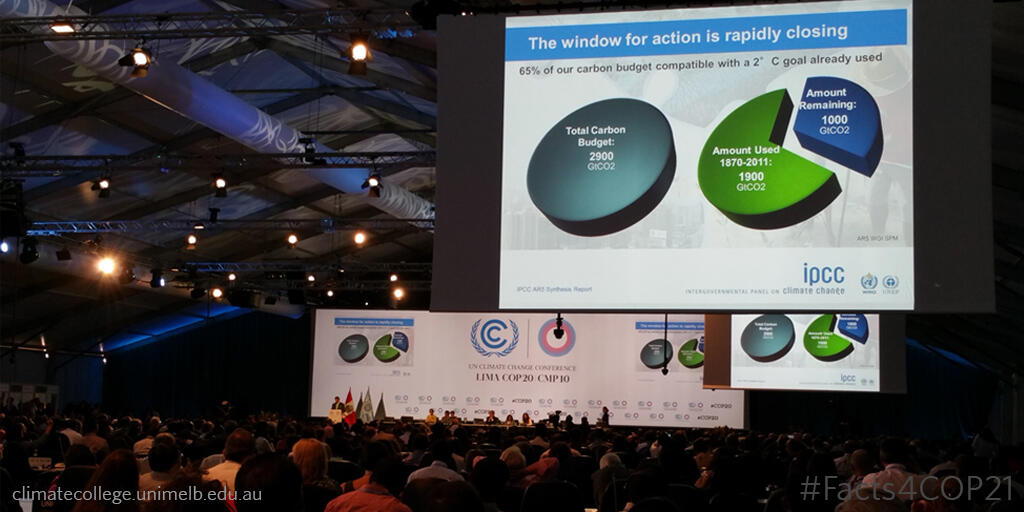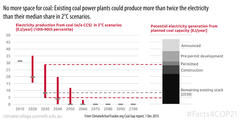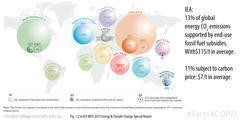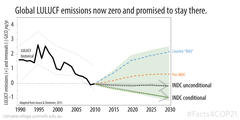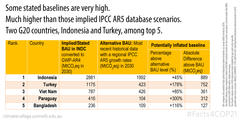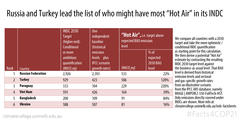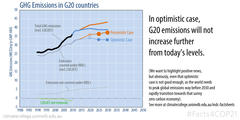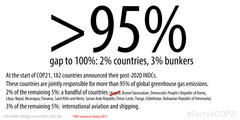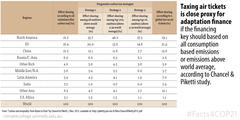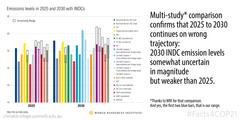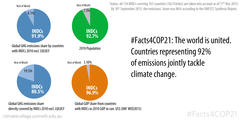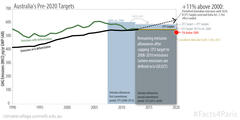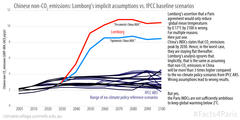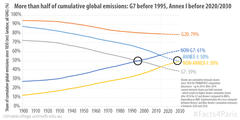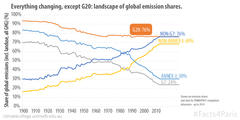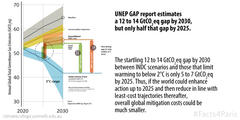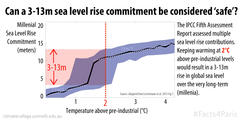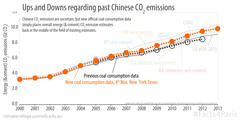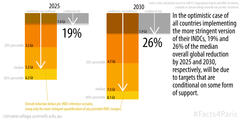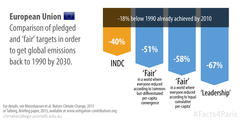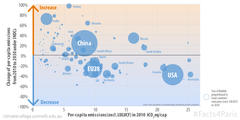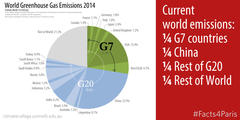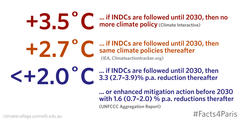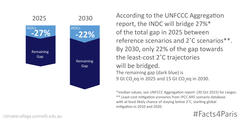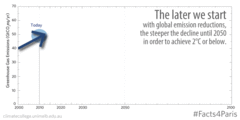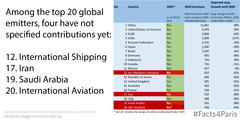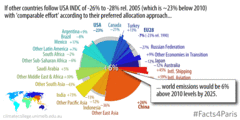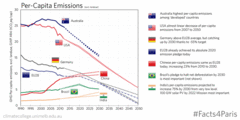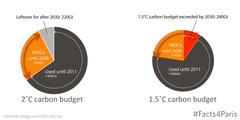The Paris Agreement writes history. The Agreement strenghtens the temperature goal from "below 2°C" to "well below 2°C" and to pursue best efforts to limit warming to 1.5°C. Less in the headlines, but of equal importance is the translation to emission goals.
Article 4 is the crucial one in regard to emissions. It says that "In order to achieve the long-term temperature goal set out in Article 2, Parties aim to reach global peaking of greenhouse gas emissions as soon as possible, recognizing that peaking will take longer for developing country Parties, and to undertake rapid reductions thereafter in accordance with best available science, so as to achieve a balance between anthropogenic emissions by sources and removals by sinks of greenhouse gases in the second half of this century, on the basis of equity, and in the context of sustainable development and efforts to eradicate poverty."
In our assessment, the Paris Agreement rises to the challenge of limiting dramatic climate change. It sets the framework for a chance to limit multi-metre sea-level rise in the long-term. Individual post-2020 country targets put on the table before Paris are insufficient to the task of limiting warming to 2°C, let alone 1.5°C. The so-called INDCs have not been enhanced here in Paris (they were never meant to be enhanced here because the main focus was on the global agreement). Thus, there exists a big gap between INDCs and the global ambition needed. This will need to be bridged by upgraded mitigation contributions from countries in the years to come. In this article, we keep in mind those insufficient country INDCs but look at the Paris Agreement itself.
What are the main targets in terms of global mitigation?
The ultimate objective of the Agreement is to limit global warming to well below 2°C, and "to pursue efforts to limit the temperature increase to 1.5°C above pre-industrial levels".
There is also a long-term greenhouse gas emission goal. It is to peak global emissions as soon as possible, then reduce rapidly, and achieve net zero emissions "in the second half of the century". These "net zero" emissions are expressed as the "balance between anthropogenic emission by sources and removals by sinks". This basically means that any greenhouse gas emissions remaining in the second half of the century need to be outweighed/compensated/balanced/offset (take your pick) by anthropogenic actions to enhance the uptake of CO2 through afforestation, biomass, carbon capture and storage, and other negative emissions techniques.
Does the Paris Agreement refer to "natural" sinks?
No, clearly not. First of all, as in "international aviation and maritime transport", "international" refers to both "aviation" and "maritime transport". Thus, the adjective "anthropogenic" refers to both "emissions" and "sinks". Furthermore, Article 4 of the UNFCCC convention uses the standard term "anthropogenic emissions by sources and removals by sinks" clearly as referring to anthropogenically induced sinks - otherwise the UNFCCC Parties would have reported incorrect data for the last 23 years. In the hypothetical case that you might interpret it differently, Art. 4 would imply a stabilisation of concentrations, which would NOT be in line with the "best available science" given that we need reducing concentrations to stabilise temperatures over the couse of this century.
Summary in graphs:
In a summary graph, the Paris Agreement contains two temperature goals and two long-term emission goals.

(download as slides here, or high-res PDF here). A simpler graph of what the Paris Agreement concluded:

(Feel free to use these graphs; just cite as: M. Meinshausen, Australian-German Climate & Energy College, The University of Melbourne, climatecollege.unimelb.edu.au, download as slides here, or high resolution PDF )
How does that language of "balance between emissions and sinks" differ from "net zero"?
Well... substantially, it does not.
A balance between a positive and a negative thing means that both parts are of equal magnitude and hence the sum is zero. However, in terms of communication and framing, they may be very different.
The "balance" language places an emphasis on the "sinks". We would argue that this emphasis is not ideal, as the enhancement of sinks via large-scale afforestation and biomass production can come with substantial risks in terms of food security and biodiversity. The "net zero" language puts an emphasis instead on the "zero". This stresses that the most important and first task is to reduce emissions to zero.
Nevertheless, whatever the expression, the substance of reducing all greenhouse gas emissions to zero is ambitious, clear and appropriate in light of collective temperature target.
How does the Paris Agreement compare to the G7 agreement in Elmau?
Arguably, the Paris Agreement target is much stronger than the G7 agreement. The G7 agreement aimed at a "decarbonisation over the course of the century". That can actually mean lots of different things.
Optimistically seen, it means that net CO2 emissions in the energy and industrial sector are phased out by 2100 with a transition to that point. The Paris Agreement has both a potentially closer timeframe ("in the second half of the century") and a broader scope (all greenhouse gases, rather than only CO2). For all greenhouse gas emissions to go to net zero, CO2 emissions have to becomes negative. Negative CO2 emissions are the uptake of CO2 from the atmosphere in growing trees and biomass. However, "negative" methane or nitrous oxide emissions are hard to imagine. Thus, the only way to have net zero greenhouse gas emissions is to have negative CO2 emissions. In order to get from today's high CO2 emission levels to negative emission levels, we first have to go through zero. The Paris Agreement therefore implicitly includes a stronger decarbonisation target than did the G7 agreement.
A look at Figure SPM.7 in IPCC Working Group 3 from the Fifth Assessment Report clarifies some things.

The bunch of scenarios analysed in this Figure aim at 450ppm CO2 equivalence concentrations. One can see that a full decarbonisation of the electricity sector occurs by 2050. Those 450ppm scenarios are roughly speaking the "below 2°C" scenarios.
This makes it clear that full decarbonisation is part of the story no matter what, but even more so if we wish to stay "well below 2°C" and at "1.5°C".
Malte Meinshausen & College
Last updated: 15 Dec 2015
